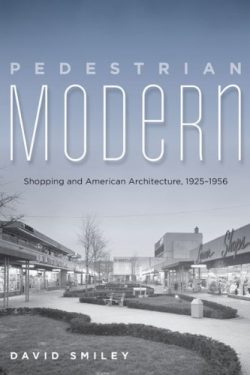In Pedestrian Modern, David Smiley reveals how the design for places of consumption—stores and shopping centers—informed emerging modernist tenets. Tracing the history of architecture’s relationship with retail environments during a time of significant transformation in urban centers and in open suburban landscapes, Pedestrian Modern expands and qualifies the making of American modernism.
David Smiley
David Smiley is an architect who teaches architectural and urban theory, design and practice at the Graduate School of Architecture Planning and Preservation. Dr. Smiley has written on contemporary urban and suburban issues, large-scale urban interventions, the re-use of shopping malls and the recent history of urban planning and urban design in the Journal of Architectural Education, Perspecta, and the Journal of Urban History. He has taught at Yale University’s School of Architecture, Washington University in St. Louis, and Texas A & M University.
